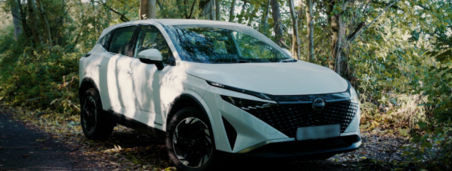UK’s rarest cars: 1975 Citroen Ami Super Estate, one of only eight left

This article was written by Telegraph editor, Andrew Roberts, in aid of MotorEasy's sponsorship of The Telegraphs 50 Classis Cars event at the Silverstone Classic on the August Bank Holiday.
One car is never enough for the avid enthusiast: not only does David Scarff own an early Citroën Ami 6, but he also owns this equally distinctive Super Estate from 1975, from late in the model’s production life.
When new, the Ami Super Estate was virtually without any British rivals and today this car is one of only eight right-hand drive examples believed to still be on the road in the UK.
We hesitate to use the word typical, but this vanishingly rare Citroën is a perfect example of a once-common everyday car that is now rarer than any Ferrari, which is why they are worth celebrating before they disappear altogether.
You’ll be able to see it – alongside 49 other everyday cars that are now almost extinct – at the Daily Telegraph’s display of the UK’s rarest cars at the Classic at Silverstone from August 26-28. As well as packed grids of the finest historic racing on all three days, the Classic has hundreds of displays from the UK's leading historic car clubs and a host of family-friendly activities including rides and funfairs.
Citroën introduced the original Ami 6 in 1961 and in 1969 it received a facelift as the Ami 8. The new version retained the 602cc, horizontally opposed twin-cylinder engine (an enlarged version of the 2CV’s power unit) and the Estate looked much the same as its predecessor, but a full-length load area replaced the saloon’s Ford Anglia 105E-style reverse angle rear window and conventional boot.
The 6 was only available to special order in this country, but the subsequent 8 was not an unfamiliar sight, often appealing to former Dyane owners who now craved slightly more comfort.
Meanwhile, the larger GS debuted in 1970 and two years later it was available with a 1,222cc engine. This meant a surplus of the earlier 1,015cc overhead-cam “boxer” units, so Citroën decided to employ them in a new version of the Ami.
The resulting Super made its bow in 1973. In addition to the larger engine, there was the gearbox from the GS, improved inboard front disc brakes, modified suspension and a floor-mounted gearchange in place of the 8’s dashboard lever. Buyers could choose from Saloon or Estate body styles, with the advertisements promising “Citroën comfort, motorway power, budget price”.
The Super was recognisable from the 8 via its extra front air intakes, while a top speed of 88mph made it 12mph faster than its stablemate. At £1,540, the Estate was slightly cheaper than a Mini 1275GT and a Sunbeam Imp Sport, its nearest British alternatives in terms of performance and engine size, but neither could offer such five-door versatility.
As a result, the Super enjoyed a dedicated following with those motorists who derided a macho mentality when it came to cars and who found the sporting Ami more than fulfilled Citroën’s promise of “a load carrier with style and comfort”. Car magazine rather liked the Estate and accurately described it as resembling a cross between a piece of 1950s sculpture and “something futuristic”.
However, What Car? thought the Super was for “Citroën-lovers only” and “one of the most uncivilised cars we have driven”, while the equipment section of their test “really could be left blank”. This was not entirely fair as the electric windscreen washers and winding front windows were luxuries beyond the dreams of the average Citroën 2CV owner.
Fortunately, Autocar was far more enthusiastic in its test of the Saloon, raving how “from about 3,500rpm it is almost as if two extra cylinders have switched in somehow and the car takes a great leap forward as the revs scream up to around 8,000rpm”. On 9 May 1973, the motoring section of this newspaper similarly noted, “You can now be first away from the lights and even overtake uphill!”
In 1974 the “Mk2” featured slotted wheels and the elaborate stripes along the flanks that you see here. Production ended in 1976 after 42,000 examples had been produced, three years before the remainder of the Ami range.
Sales of the Super were slow in its homeland, as it was in the 5CV horsepower category, with consequent tax penalties.
Scarff acquired this example in 2018. He says: “My father had an Estate when I was a child, so buying this one was a must, even if it did need a lot of work.” The renovation, by Barry and Peter Annalls, took three years, and today the Citroën often inspires awe in other road users. In Scarff’s words, the Super is “enormous fun, and when you put your foot down, they are very responsive and surprising – I certainly surprise the boy racers around Bedford at the traffic lights”.
In its heyday, the Ami Super Estate was unique in the British new car market – a lightweight, sporting, front-wheel drive, five-door machine of a very distinctive appearance. And many a satisfied owner would agree with Autocar’s verdict “There has been nothing quite like this Citroën since the original Mini Cooper.”
Competition Time
We're giving away 4 tickets to the Silverstone Classic on 26th-28th August! To enter just click the link below and answer one question. Good luck!
Related Reading:
Driving in Europe: what you need to know








